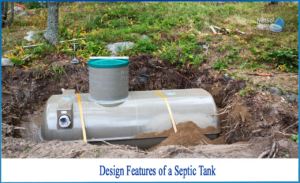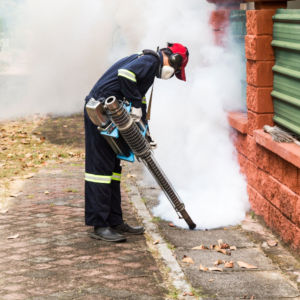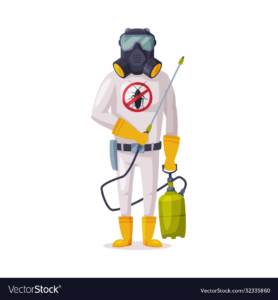Perth Insulation reduces heat transfer in a home by slowing the flow of thermal energy. This is accomplished by reflecting radiant heat, inhibiting conduction, and decreasing convection.
Insulation materials include blankets, boards, and poured insulation. Homeowners can install some, while others require professional installation.

Fiberglass is the most familiar to homeowners because it is available at home improvement stores and used in new construction. However, cellulose-blown insulation is quickly growing in popularity.
Energy Efficiency
Insulation can significantly reduce the amount of energy needed to heat or cool a home. It does this by slowing the flow of hot or cold air, making it more difficult to move through a building envelope. By reducing the amount of energy required to make a home comfortable, it helps to lower energy bills, reduce greenhouse gas emissions, and protect the environment.
There are many different types of insulation available, each rated with a R-Value, which measures its ability to resist the flow of thermal energy in a certain direction. The higher the R-Value, the greater the insulation’s resistance to heat transfer. Insulation can be made from a variety of materials, including fiberglass, mineral wool, cellulose (tiny bits of shredded paper), and polyurethane foam, among others. Some insulation products also incorporate a reflective surface to further slow the flow of heat.
The most important factor to consider when choosing a type of insulation is the level of energy efficiency it provides. Insulation is generally rated on how well it prevents heat from flowing through walls and floors, or into or out of a house, depending on its location. For example, a house located in a very cold climate will need more wall insulation than one in a warmer region.
Quality insulation is often able to stop most of the flow of thermal energy from one area to another, reducing air leaks around doors and windows. Aside from reducing the amount of heating and cooling required, good insulation also reduces the risk of fires caused by accidental ignition or by faulty electrical appliances.
Draughts are the worst culprit when it comes to wasting energy, as they can allow hot or cold air to escape from the house and can be easy to fix with simple insulation materials such as draught sealers. Insulation can also help to solve draughts around letterbox openings, keyholes, and other holes in the wall or ceiling that let warm or cold air in and out.
An added bonus of boosting your house’s insulation is that it will often increase its value if you plan to sell in the future. This is because potential buyers will be able to see that the house is more energy efficient and will likely pay you a premium for it.
Comfort
Imagine walking into your home during a cold winter day and being enveloped in a cozy, comforting warmth. Or envision yourself relaxing in your living room on a scorching summer day as cool air blows over you from a hidden source. This sense of comfort can be attributed to insulation’s role in regulating indoor temperatures and eliminating drafts. It also helps to cut down on energy loss and increases your overall comfort by reducing the strain placed on heating and cooling systems.
Whether you live in a new build or a renovated home, insulation is an excellent option for you and your family. There are several different types of insulation available, including rolled fiberglass, cellulose, and spray foam. Each has its own unique characteristics and installation requirements.
For example, rolled fiberglass and cellulose require professional installation to ensure the integrity of your home’s thermal envelope. Meanwhile, spray foam insulation expands to fill gaps and voids for a more thorough application that will reduce air leakage and prevent thermal gaps. If you are unsure which type of insulation is right for your home, it’s best to consult with a trusted home improvement professional. They can recommend the best type of insulation and install it for you.
Another benefit of insulation is its ability to reduce noise. If you have noisy neighbors or live on a busy street, insulating your home could help to ease the disruption and create a quieter environment in which to relax.
Adding or reinsulating your home with the right type of insulation can dramatically improve your energy efficiency. By slowing the transfer of heat, insulation can reduce your HVAC costs and increase your comfort year-round. It’s a smart investment that can pay off for years to come!
Durability
Insulation can help you save energy by slowing the transfer of heat from warm areas to cold ones. It works on a basic scientific principle: it creates tiny pockets of air between the surfaces that are being insulated. These pockets of air are very effective at reducing thermal transfer, and this is what gives most types of insulation their high R-values (the higher the R-value, the more efficient the insulation).
There are many different kinds of insulation available, and each has its own pros and cons. For example, foam board is good for insulating walls and ceilings because it can be cut into specific shapes, but it can also be difficult to work with. Spray foam is ideal for filling in small cracks, gaps and crevices, but it isn’t as durable as fiberglass, so you need to take care when handling it.
Blanket insulation is often the most economical, and it comes in a variety of materials. The most common is fiberglass, but it’s also available in mineral wool, cellulose (shredded recycled paper), plastic fibers and even natural fibers like cotton and sheep’s wool.
Another popular choice is sprayed foam insulation, which expands to fill spaces and seals air leaks, making it very energy-efficient. It’s also more expensive than fiberglass.
Mineral wool and cellulose are both made from recycled paper, but they’re treated to make them fire-resistant. Cellulose is very eco-friendly, as it uses up to 80% recycled materials. It’s also one of the best types of insulation for soundproofing, but it can be difficult to install, and it doesn’t last as long as other kinds of insulation.
Other types of insulation are designed to be built into a building. For instance, foam core and polyisocyanurate are used to insulate a home’s walls and roof. These are usually incorporated into the building’s frame when it is being constructed, and they’re particularly useful in new homes. They are also a good choice for insulating ductwork. They’re fabricated into duct insulation by HVAC contractors, and they can be installed by builders or homeowners who follow special instructions and safety precautions.
Safety
Insulation is a crucial safety factor in buildings. It helps to prevent the transmission of heat and electricity, while keeping a comfortable temperature in the home. However, the safety of insulation depends on the type used and how it is installed.
There are several types of insulation, from fiberglass batts and rolls to cellulose and spray foam. The type of insulation you choose will depend on your home’s climate, its structure, and the R-value it has.
Thermal insulation is made from materials that trap pockets of air within them, reducing the amount of heat that passes through them. These materials can be recycled paper products, such as old newspaper or cardboard, mineral wool like rock and slag wool, or cellulose fibres that are made from plant material. Foam is another popular insulation option, and it is often a good choice for renovation projects.
When installing insulation, it is important to wear the correct clothing. This includes long sleeves and pants, and a mask to protect your nose and mouth from itchy fibres. It is also a good idea to wear protective eyewear and gloves when working with any type of insulation.
It is also important to inspect your insulation regularly. Regular inspections can help identify any issues with the installation, such as settling or damage. Addressing these issues early will improve your home’s energy efficiency.
In addition to its safety benefits, insulation can also improve indoor air quality (IAQ) by reducing both outdoor and indoor pollutants. This can be helpful for people with respiratory conditions, such as asthma.
Insulation is an essential safety feature whether you are building your new home or renovating an existing one. It can reduce the transfer of heat, preventing your house from overheating in summer and becoming too cold in winter. It can also reduce the transfer of sound, making your home quieter and more comfortable. The right type of insulation will be a good fit for your home, and you can consult with an experienced professional to ensure its installation is completed safely.








